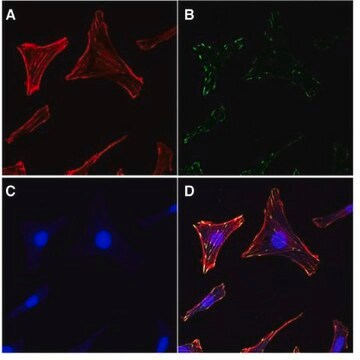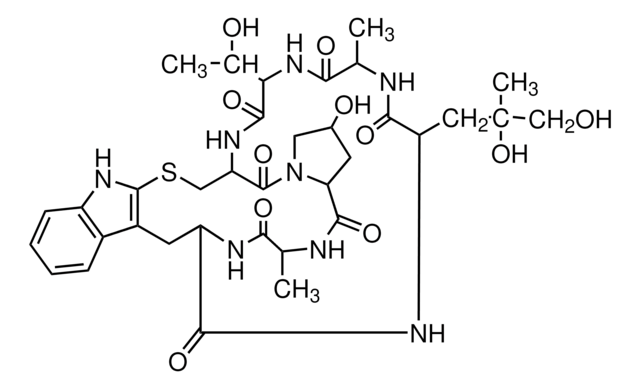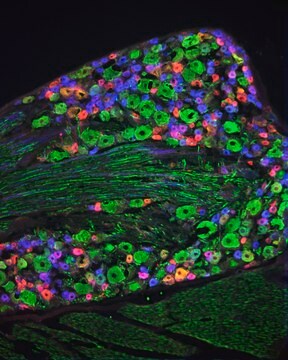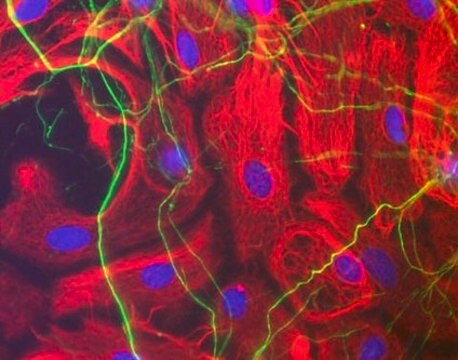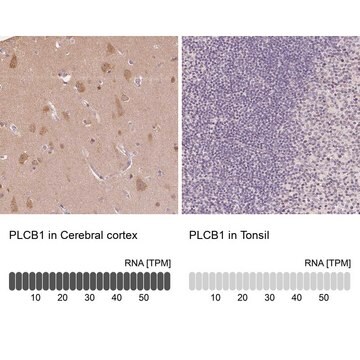P1951
Phalloidin Peptide
≥90% (HPLC), solid, TRITC labeled
Synonym(s):
Phalloidin-TRITC
About This Item
Recommended Products
product name
Phalloidin–Tetramethylrhodamine B isothiocyanate, sequence from Amanita phalloides(synthetic: peptide sequence)
biological source
sequence from Amanita phalloides (synthetic: peptide sequence)
Quality Level
form
solid
fluorescence
λex 540-545 nm; λem 570-573 nm
storage temp.
−20°C
Related Categories
General description
Application
Phalloidin-Tetramethylrhodamine B isothiocyanate has been used:-
- In Immunofluorescence for staining Filamentous actin (F-actin)
- To stain cells during immunocytochemical and cytochemical analysis
- To label actin microfilaments for fluorescence microscopy
Biochem/physiol Actions
Other Notes
related product
Signal Word
Danger
Hazard Statements
Precautionary Statements
Hazard Classifications
Acute Tox. 2 Dermal - Acute Tox. 2 Inhalation - Acute Tox. 2 Oral
Storage Class Code
6.1A - Combustible acute toxic Cat. 1 and 2 / very toxic hazardous materials
WGK
WGK 3
Flash Point(F)
Not applicable
Flash Point(C)
Not applicable
Personal Protective Equipment
Certificates of Analysis (COA)
Search for Certificates of Analysis (COA) by entering the products Lot/Batch Number. Lot and Batch Numbers can be found on a product’s label following the words ‘Lot’ or ‘Batch’.
Already Own This Product?
Find documentation for the products that you have recently purchased in the Document Library.
Customers Also Viewed
Our team of scientists has experience in all areas of research including Life Science, Material Science, Chemical Synthesis, Chromatography, Analytical and many others.
Contact Technical Service


